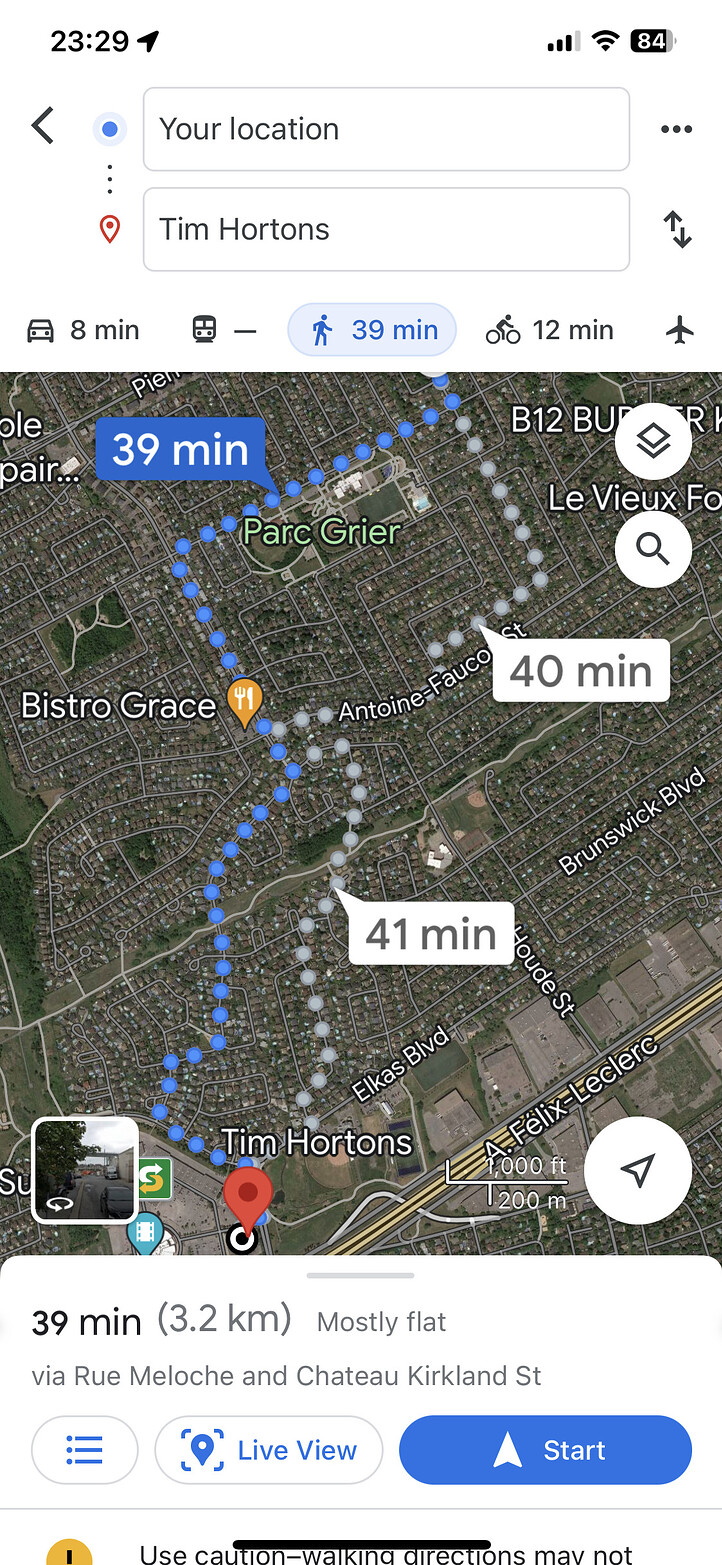C’est dans la moyenne quand on compare au réseau existant à Montréal, ou encore au réseau de Paris, mais la moyenne réelle quand on regarde les autres réseau se situe plutôt à quelque part entre 1 et 1.5km. C’est donc dire que la plupart des réseaux ont de deux à trois fois moins d’arrêt que Montréal. Les destinations entre deux arrêts sont habituellement desservi par d’autres moyens de transport. En Europe, c’est souvent le tramway qui joue se rôle tandis qu’en Asie, plusieurs villes ont des systèmes divers qu’on peut mettre dans la catégorie “people mover”.
Funny, you’ve just described what everyone on these forums screamed was terrible idea whenever someone suggested the REM-B might be better as a local tram in the centre and a grade-separated tramway as it headed away to the suburbs.
Most systems, whatever the mode or transit hierarchy, station density tends to follow urban density. We’re getting a bit pedantic here with particular interstation distance…

You are talking about your average American LRT which does not have a properly defined role and thus does not serve any need particularly well. In Europe and Asia, the transit hierarchy is much better defined than it is in North America.
- Bus - Local service
- Tramway - Local service in dense urban environments.
- People Mover - Same role as the tramway, but grade separated and fully automated.
- Metro - Fast frequent service between neighborhoods
- Trains - Regional / Intercity
The American LRT is one of those things that we absolutely should avoid like the plague. The REM fills a role somewhere in between a metro and a regional express and is a combinaison that actually works. Unlike an LRT, the REM actually has the right combinaison of elements to be wildly successful.
No. Not at all. I’ve often talked about the G:link (Gold Coast Light Rail), and while it serves a coastal (read: linear) city, it’s basically as previously discussed — and subsequently vehemently dismissed — in these forums as one possible REM-B proposal: it is a street-running tram in a 5 km protected right-of-way in the densest part of the centre from Broadbeach South to Surfers Paradise North, then fully grade-separated for 15 km at 70 km/h. It serves its role particularly well.
There are only a couple of these in Asia that are what could be considered successful, such as in Singapore. The rest are novelties, like in Detroit.
That’s one discussion that could spin around for a while. The point that I’m making is that every system has a role which it fulfills best and that it is important to select the right system for what you are trying to accomplish. If we are going to debate REM de l’est, then we should probably be doing that in the other thread, and we should probably start by narrowing what it is that we would like to accomplish with that system.
As far as I’m concerned, I think that the role that the Projet Structurant de l’Est should serve is to speed up travel between boroughs. I think that busses can continue to serve take care of the local service and that they are perfectly adequate for that role given the existing density along that corridor.
Which brings me back to my question about GBL: are we building a Paris Métro with stations 550 metres apart? Or a RER, with stations separated enough to allow higher service speeds? If it’s both, as @Rotax points out, we have to be prepared for longer transit times, like on our Métro. The more stations added — and don’t get me wrong, I’m in favour of that — the less of a time advantage over the RTL buses between Brossard and downtown.
And going back to my point further up: the proposed GBL is barely 330 metres from the end of the Centrale mainline platforms, it just seems ridiculously close. It’s great that the tech workers and young professionals of the area don’t have to scooter an extra 500 metres to catch a metro to Le Lovers (or whatever sweaty pickup joint replaced it), while people in the suburbs who need to get to work will have to walk or bike two or three kilometres (without sidewalks) thanks to the poor choices of location for the stations.
La distance entre les 2 stations sera de 750 m environ. La station du REM est sous le stationnement étagé de la gare Centrale.
Le bout de quai à l’extérieur de la gare centrale ne sert pas vraiment sauf aux quelques super longs trains de VIA pour Halifax.
I’m definitely willing to axe GBL. You have to consider that there is a proposition for a station at Bridge Wellington. I really like that proposition. It is further away in an area which the city and a promoter are looking to develop. The sector is really enclaved by the highway and the railway. A station at that location would make a real difference and greatly improve access to transit in that sector. The peoples who would use GBL can easily walk to Gare Centrale.
Even if you measure from the front end of Gare Centrale platform and the back end of Griffintown, it’s 550m. McGill station is 400m from Gare Centrale in comparison
Also, you can walk inside between the Gare centrale & McGill… But on a 9 lanes stroad between Griffintown-BL and Gare centrale.
One of these days I will hop on my bike and make a Hyperlapse video of just how torturous a path I have to take to get to the future Kirkland station, with all the bad roads, muddy trails, no sidewalks (and snow banks further narrowing the streets in winter) lol
Honestly if we had good cycling infra (and better snow cleaning practices), biking and bike parking could be the best way to get to the REM for west islanders (since we’re not getting parking so driving’s out). Cycling grants the flexibility and reliability of a car (in the sense of you dont have to walk 10 minutes to wait 30 more minutes for a bus that may or may not show up, you just grab ur bike and go just as you would hop in your car and drive). But unlike cars, managing bike parking is wayyy easier to deal with than car parking.
The main challenge seems to be that in the rain or snow, the longer bike commutes would probably be a pain but it is what it is (sheltered/covered bike parking so we dont have to take a wet/snowed/icy bike back home could probably alleviate it a little but i wouldn’t know; ive never actually commuted by bike in the rain or snow lol).
Even that screenshot you sent, cycling seems like it could be competitive with driving (time-wise) if only it was safe to do so (that means plowing the bike lanes in winter, isnt that right pierrefonds???)
Un message a été fusionné à un sujet existant : Réseau cyclable montréalais - Discussion générale
off topic, but it would be kind of funny if Tim Hortons got a concessions at the new stations. expropriation one day, monopoly the other.
Si on prend l’exemple de la Canada Line, inspiration directe du REM, il y a 1,5km de distance entre King Edward et Broadway mais seulement 350m environ entre Broadway et Olympic Village.
Je pense qu’il ne faut ni comparer le REM à un RER ou S-Bahn, ni à notre métro. C’est un métro léger mis en place par la Caisse, avec des stations situés de façon à faire le plus de bénéfices possibles tout en étant le plus simple techniquement (avec quelques exceptions comme celles du centre-ville, pour des raisons évidentes).
À mon sens, il manque même des stations sur l’antenne Ouest pour en faire un système complet et accessible le plus possible.
